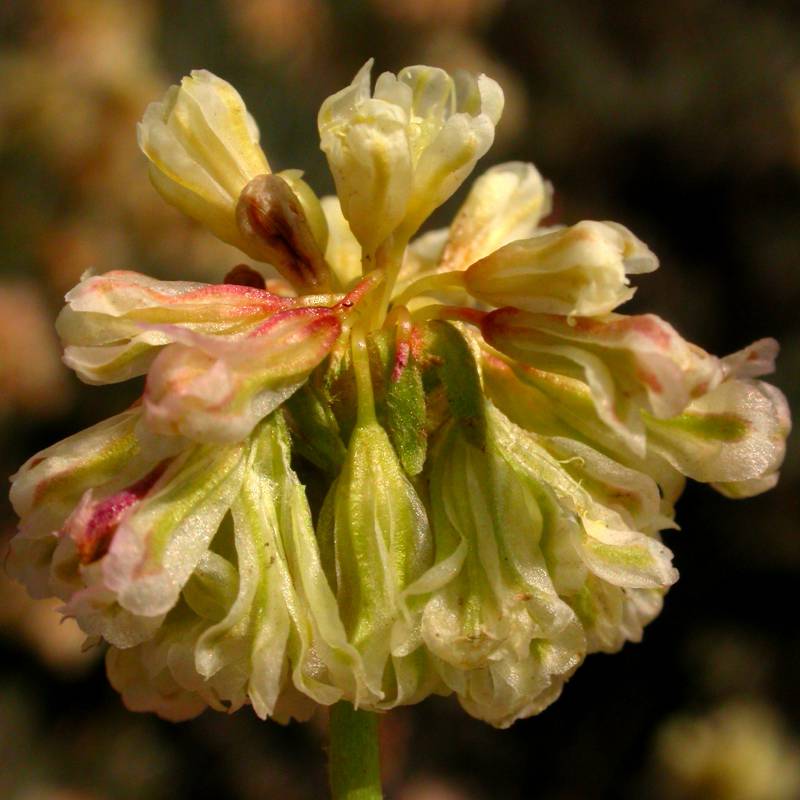|
|
rock buckwheat, round-headed eriogonum
|
|
Spreading to erect sub-shrub, freely branched, forming a dense, rounded clump to 4 dm. tall. |
|
Numerous in whorls at the branch tips, broadly linear, 1-3 cm. long by 3-6 mm. wide, somewhat grayish-woolly on the underside and less so on the top |
|
Flowering stems 5-10 cm. tall, terminating in an umbel of two or more pedicels, which are subtended by several leafy bracts; the involucres are cup-shaped, with 6-10 oblong lobes about 3 mm. long, about equaling the tube, reflexed to spreading; the tepals are usually yellow, but occasionally white or pinkish, 6-8 mm. long with a stipe-like base, and forming a ball-like flower cluster. |
|
|
Eriogonum diclinum |
|
|
The dense, rounded clump of fine branches covered with bright yellow spheres of flowers should identify this species. |
|
May-July |
|
Sagebrush or juniper flats to ponderosa pine forests at low elevations. |
|
|
Occurring east of the Cascades crest in Washington; Washington to California, east to Idaho and Nevada.
|
|
Native |
|
Not of concern |
E. baileyi, E. cernuum, E. codium, E. compositum, E. douglasii, E. elatum, E. flavum, E. heracleoides, E. maculatum, E. marifolium, E. microtheca, E. niveum, E. nudum, E. ovalifolium, E. pyrolifolium, E. sphaerocephalum, E. strictum, E. thymoides, E. umbellatum, E. vimineum |
E. baileyi, E. cernuum, E. codium, E. compositum, E. douglasii, E. elatum, E. flavum, E. heracleoides, E. maculatum, E. marifolium, E. microtheca, E. niveum, E. nudum, E. ovalifolium, E. pyrolifolium, E. strictum, E. thymoides, E. umbellatum, E. vimineum |
|
|
| |


